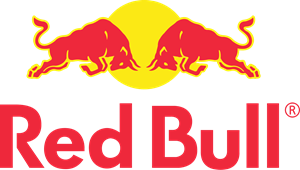과학자들이 서핑을 할 때 일어나는 일입니다.
Injecting science into surfing is nothing new. Science exists in several elements of surfing, including wave mechanics, swell models, weather patterns, athlete performance, and a long list of other areas.
The goal of the Red Bull Surf Science project is not to revolutionize the way we approach surfing, or even try to elevate it to the next level. Instead, the objective is to further advance the technology that is being developed, and test it in the harshest conditions possible. If we can get this technology to work and produce credible results, we'll be able to take key learnings and hopefully improve athlete performance, not only in the water but with other sports as well.
Brandon Larson, from the Red Bull High Performance team, breaks down the purpose of this project like this: “Technology is another tool that you can use in a series of things you do. The tribal knowledge, the experiential knowledge, the gut feelings, the collaboration between surfers and coaches will always come first. But having this data allows you to monitor progress, and correct any necessary changes.”
With that in mind, we boarded a plane to Mexico for a week of science class armed with a full list of technologies, a group of scientists, and the most important element to the project, the test subjects: surfers Jake Marshall, Josh Moniz, and their coaches Chris Stone and Rainos Hayes.
“Before, it would seem silly to apply science to surfing if you didn’t have a coach, if you didn’t train," explains coach Stone on his expectations for the project. "But now that the playing field is getting more and more level, where do you find that extra improvement?"
We thought we had a strong sense of how things were going to play out once we got to Mexico, but as with most scientific experiments, we learned much more than expected.
Jake Marshall in Mexico
© SETH DE ROULET/RED BULL CONTENT POOL
01/07
Technology: Video Watch
Objective: Instant feedback with real time communication between surfer and coach.
Hypothesis: The quicker the feedback, the greater the impact. Imagine having the ability to watch a replay of your wave mixed with feedback from your coach as you paddle back into the lineup. Gone are the days of having to come in or wait until after the session to get the proper teaching to improve your surfing.
Experiment: After rigging a specially designed wi-fi system, Jake and Josh paddled out for a surf with their coaches behind the lens on shore ready to send info to the watch. After a few waves, and troubleshooting some technical issues with the watch, they were able to successfully complete the process.
The quicker the feedback, the quicker the body remembers what it did, and the athlete can make those changes quickly.
Conclusion: Once this system is fully dialed in, it will be the most immediately helpful of all of the technologies to the surfers. The benefit of immediate feedback will go a long way in improving their surfing. "The quicker the feedback, the quicker the body remembers what it did, and the athlete can make those changes quickly," says Chris. Along with video, live scoring sent to the watches will change the game during a heat in a contest. In the future the device can also be a platform to review other sensor data.
Technology: "Air Dog," Fully Autonomous Drone
Objective: Analyze performance from a new perspective (or to give a coach a new visual perspective). Capture tight and accurate video by operating the drone by a sensor attached to the surfer.
Hypothesis: The arms race behind developing the perfectly operating autonomous drone is in full effect. The technology is out there and being fine tuned as we speak. In a day and age where footage is critical to a professional surfer's career, Air Dog aims to make the process easier.
Experiment: Putting the system to the test, Jake paddled out with a sensor around his neck and the drone over his head.
Conclusion: The potential is great. The ability to capture quality footage at a moment's notice without the help of a camera operator will go a long way. This technology is no longer around the corner; it’s here.
Jake is excited to see what the future holds
© SETH DE ROULET/RED BULL CONTENT POOL
01/08
Technology: Notch, Motion-Capture Sensor
Objective: Exploring various paddling techniques and, if analyzed correctly, how can they help improve overall performance for the surfer.
Hypothesis: It may seem obvious, but rarely is paddling technique analysis thought of as a way to improve surfing.
Experiment: With the Notch attached to their wrists, Jake and Josh underwent a number of different paddling exercises, focusing solely on paddling without the action of trying to catch a wave.
Conclusion: An often overlooked but critical part of surfing is paddling. Analyzing your speed, stroke ratio, and performance outcome can make a difference in your surfing. Both Josh and Jake were able to find flaws in their paddling that they didn’t know existed. Sensor data supported onsite correction of these flaws.
Technology: Trace -- Surf Session Tracker
Objective: The idea with Trace is to track the physics and performance of the surfer while on the wave.
Hypothesis: The small, puck-like sports monitor with GPS and nine axis sensors will provide useful data to analyze a specific training session.
Experiment: We attached the system to Jake and Josh’s boards before they paddled out for a surf.
Conclusion: This data is helpful for the surfer to analyze their session. While surfing, you don’t really think about how far, how fast, how many turns or at what angle you maneuver your board. This technology is directly related to performance and will help the surfer improve with analytics they didn’t pay attention to in the past.
Jake testing the Eye Tracking Stystem
© SETH DE ROULET/RED BULL CONTENT POOL
01/07
Technology: PPS Pressure Sensing Booties. Drive and Control
Objective: Gain insight into how surfers control their boards to optimize power and speed.
Hypothesis: The feet are the interfaces to the equipment and we believe elite surfers use very specific patterns of pressure on the board to carry out various maneuvers.
Experiment: Both Jake and Josh wore specially-designed booties with pressure sensors and focused their sessions on specific aspects of surfing: speed, cutbacks, and airs.
Conclusion: After taking the data pulled from the session, we’re able to analyze their technique for control, power and speed through the Tact Array system. These types of granular findings will help us analyze surfing at a deeper level than before.
Watch the behind the scenes video of how the booties were designed.
Surfing · Boarders · 2 min
Surf Science: PPS Pressure Sensing Booties
Technology: SMI Eye Tracking Glasses
Objective: Identify exactly what the surfers are focusing on while surfing.
Hypothesis: This is the first step to understanding where the focus of a professional surfer is and how that can translate to the average surfer. This testing is common in mainstream sports but is new to surfing.
Experiment: With high-tech goggles and specially-designed fanny pack computers, we were able to capture video of exactly what Jake and Josh focused on while surfing.
Conclusion: It was the first time eye tracking was experimented with in water, now the goal is to take what they’ve learned and package it together for the average surfer to use to improve.
Technology: Wearable Sensing's Dry EEG
Objective: Explore how surfers make decisions in the water.
Hypothesis: This technology can be utilized to help an athlete learn from their decision making process and prevalent mindset.
Experiment: This is the first time EEG has been tested in the ocean. As you can imagine, there was some difficulty in getting accurate readings, but after a few adjustments and strapping a laptop to the surfers back, we were able to gain some compelling data from Jake and Josh.
Conclusion: Turns out, surfers are as chill as they appear. Jake showed extreme relaxation while sitting out in the lineup. For the EEG test, it was more about the advancement in the system and the technology that will help better understand the mind in the long run.
All the technology we experimented with this week in Mexico will help surfing in the long run. I’m really excited to see what the future holds.
Red Bull Surf Science is not designed to change the game of surfing, it’s more about helping the athletes achieve the most success they can. It’s about driving technology and improving the things we know to help improve the sports, and to share the info we’ve learned with other athletes, with other sports, or with the general public. "All the technology we experimented with this week in Mexico will help surfing in the long run. I’m really excited to see what the future holds," says Jake.

